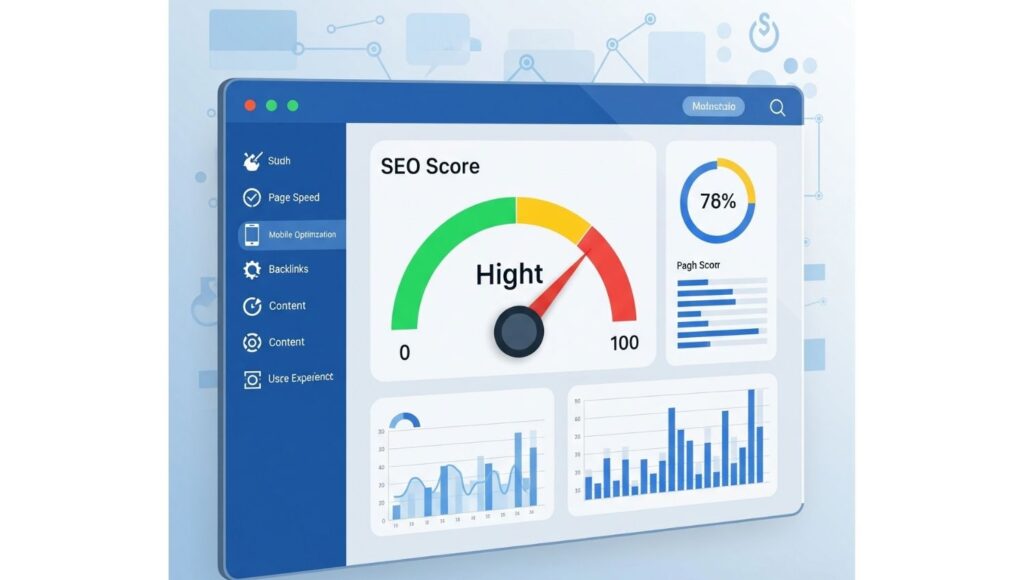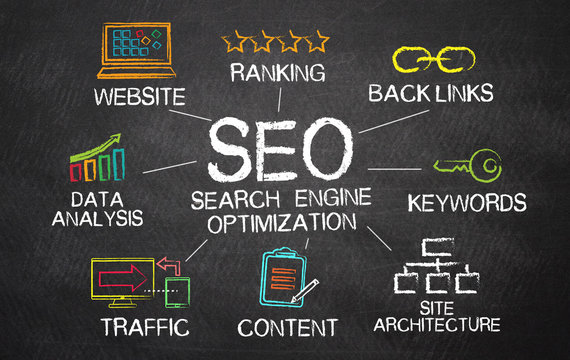SEO Scoring: The Definitive Guide to Measuring and Enhancing Your Website’s Visibility
Table of Contents

Introduction
In the enormous virtual world, every scroll, click, and keyword is significant. Companies want to show up on Google’s first page—not out of ego, but for visibility, relevance, and sales. That’s where SEO scoring comes in.
SEO scoring is not a vanity metric; it’s a holistic assessment of how your website performs from the point of view of a search engine. It’s your website’s health check report. Whether you’re a startup entrepreneur, content creator, or an experienced SEO marketer, knowing how SEO scoring works can inform your digital tactics and drive sustainable organic growth.
In this guide from The Next Digital, we deconstruct everything you need to know about SEO scoring—from its components and methodology to how you can use it to take over search results.
What is SEO Scoring?
SEO scoring is a quantitative assessment of the search engine optimization value of your site. It is usually rated from 0 to 100, with the higher score indicating that your website is optimized for search engines.
But the bad news: SEO scoring is not standardized. Various tools and audits have different formulae. Nevertheless, the fundamental factors are the same: technical performance, quality content, backlinks, mobile usability, and user experience.
Why is SEO Scoring Important?
A good SEO score indicates that your website:
- Has a higher chance to appear in search queries that are related to it
- Is faster in loading and provides better user experience
- Is in line with Google’s best practices
- Achieves credibility both among search engines and users
- Beats out competitors who disregard on-page and off-page SEO factors
In simple words, SEO scoring gives you actionable insights for improvement. It shows you what is working and what needs fixing—so you’re not throwing darts in the dark.
The Core Components of SEO Scoring
To truly understand your SEO score, let’s break down its key building blocks.
1. Technical SEO (Infrastructure & Crawlability)
Search engines are similar to users—they love quick, reachable, and safe websites. Below are the factors that influence your technical score:
a. Site Speed
Page loading time directly impacts bounce rate and user happiness. Google’s Core Web Vitals track speed indicators like:
- Largest Contentful Paint (LCP)
- First Input Delay (FID)
- Cumulative Layout Shift (CLS)
b.Mobile-Friendliness
With mobile-first indexing, your mobile experience is your main experience. A responsive, fast mobile site boosts your SEO score.
c. HTTPS Security
Websites with SSL certificates (https\://) are given preference. It ensures secure data exchange.
d. XML Sitemaps & Robots.txt
These files guide search engine bots. Proper configuration improves crawlability and indexing.
e. Structured Data (Schema Markup)
Adding schema helps search engines understand your content, increasing your chances of rich results.
2. On-Page SEO
These are optimizations within your pages on your site. The most important on-page factors that affect your score are:
a. Title Tags and Meta Descriptions
One-of-a-kind, keyword-dense titles and meta tags enhance click-through rate (CTR) and relevancy.
b. Header Tags (H1, H2, H3)
These make content readable and assist search engines in understanding the topic structure.
c. Keyword Optimization
Inserting keywords naturally within content, particularly in the title, subheadings, and first 100 words, improves relevance.
d. Content-Length and Quality
Long, detailed content performs better. But quality is more important than quantity. Don’t keyword-stuff or add fluff.
e. Internal Linking
Intelligent internal links enhance site structure, spread authority, and lower bounce rate.
3. Content Quality and Relevance
Your content needs to align with search intent. Google’s algorithms examine:
- Readability and grammar
- Originality (no duplicate content)
- Engagement metrics (time on page, bounce rate)
- Freshness and frequency of updates
Well-researched, informative, and valuable content is rewarded with better SEO rankings.
4. Backlink Profile (Off-Page SEO)
External links are a vote of confidence in your content. But links are not created equal.
a. Number of Referring Domains
More distinctive domains linking to your site generally indicate trustworthiness.
b. Link Authority and Relevance
Backlinks from high-authority, relevant websites enhance credibility.
c. Anchor Text Diversity
Prevent over-optimization. Natural anchor texts signal natural linking.
d. Toxic Links
Spammy backlinks from irrelevant or low-quality pages can penalize your score. Periodic backlink audits are necessary.
5. User Experience (UX) Metrics
Search engines use more and more behavioral data to measure quality.
a. Bounce Rate
If visitors rapidly bounce away, it signals that your content might not be relevant.
b. Time on Site
Engaging content retains users longer, enhancing your UX score.
c. Click-Through Rate (CTR)
Increased CTR on search results indicates relevance and might be the cause of increased rankings.
Checking Your SEO Score
There are numerous tools with full SEO scoring capabilities, including:
- Google Search Console
- SEMrush Site Audit
- Ahrefs Site Health
- Moz Pro
- Screaming Frog SEO Spider
Each tool may tally scores differently, yet every one of them provides actionable feedback based on industry best practices.
What is a Good SEO Score?
Although the optimal SEO score depends on the tool, here’s a general guideline:
- 80–100: Excellent. Your site is properly optimized.
- 60–79: Good, but improvement is needed.
- 40–59: Fair. Prioritize addressing critical issues.
- 0–39: Poor. Needs serious optimization.
Remember: A score of 100 doesn’t mean your work is finished. SEO is a continuous process, not a one-time setup.
SEO Score Killers
Even if done with the best of intentions, a number of things can quietly damage your score:
- Duplicate content between pages
- Poor or non-existent meta tags
- Broken links and 404 errors
- Compressed images reducing site speed
- Use of too many exact-match anchor texts
- Not optimized for mobile
- Thin content with no real value
How to Improve Your SEO Score: Step-by-Step
Let’s now talk action. Here’s a simplified action plan to boost your score:
1. Start With an SEO Audit
Use a tool to perform a site-wide audit and list all errors: missing tags, slow pages, broken links, etc.
2. Fix Technical SEO Issues
- Enable HTTPS
- Optimize Core Web Vitals
- Fix broken links and redirects
- Submit updated sitemap
- Optimize site speed through image compression and caching
3. Enhance On-Page Optimization
- Write engaging, keyword-based title and meta descriptions
- Include descriptive alt tags for images
- Organize your content with H1–H3 tags
- Include internal links to related pages
4. Elevate Content Strategy
- Do keyword research for each post
- Write comprehensive, user-centric articles
- Refresh old blog posts with new insights
- Refrain from duplicate or spun content
5. Develop a Quality Backlink Profile
- Write a guest blog on authoritative sites
- Leverage HARO (Help a Reporter Out) for PR mentions
- Develop shareable infographics
- Contact bloggers and influencers in your space
6. Track User Behavior
- Utilize heatmaps to observe where users click or abandon
- Optimize CTAs to extend dwell time
- A/B test headlines and meta tags to enhance CTR
- Get rid of distracting popups or auto-play video
Case Example in Real Life
Let’s consider a fictional example:
The Next Digital launched a blog with little organic traffic. On auditing, they discovered:
- Pages were loading in 5+ seconds
- All title tags were either missing or duplicate
- 40% of content was less than 300 words
- 70% of backlinks were from irrelevant directories
They fixed the technical issues, re formatted content, eliminated toxic backlinks, and reorganized their internal linking system. In 90 days, their SEO score went from 48 to 84, and organic traffic increased by 270%.
How Frequently Do You Need to Check Your SEO Score?
- Monthly audits work best for most companies
- Following significant site changes (such as redesigns or migrations), perform an audit
- Review individual blog posts or landing pages every quarter
Integrate SEO scoring into your regular maintenance, not as a one-time activity.
SEO Score vs. Google Rankings: Are They Equivalent?
No—they’re connected, but they’re not equivalent.
An excellent SEO score improves the odds of improved rankings but does not assure them. Google’s algorithm takes into account more than 200 signals, most of which are beyond what is accounted for in scoring tools.
But an SEO score is your diagnostic report—correcting the issues it flags provides a solid foundation to compete in the SERPs.
Conclusion: Build for Users, Optimize for Search
As with everything else, SEO scoring is not just a number—along with providing you with a metric to strive for, it’s also a scorecard that measures your site’s overall health and user experience. A properly optimized site doesn’t rank higher, it keeps visitors on the site longer, creates trust, and converts better.
At The Next Digital, we are convinced in the strength of sustainable SEO. Rather than pursuing algorithms, prioritize providing real value, having a healthy site, and utilizing your SEO score as a guiding star to keep you on track.


